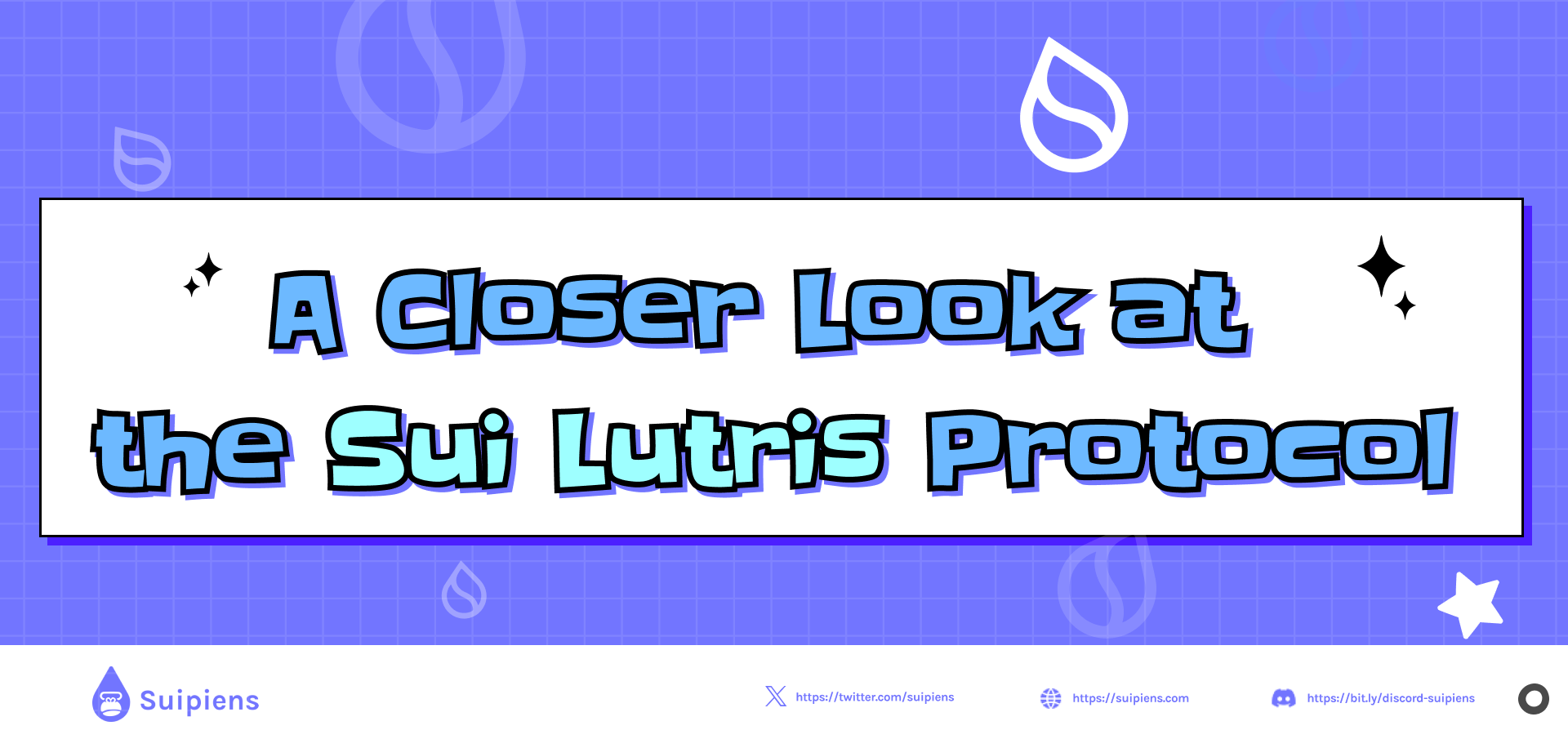A Closer Look at the Sui Lutris Protocol

Let's dive into Sui Lutris - the distributed system protocol behind Sui for high-speed and stable transactions.
In the world of blockchain technology, innovation never stops. From the inception of Bitcoin to the current day, blockchain has evolved and expanded its horizons. Today, we delve into the technical depths of "Sui Lutris," the distributed system protocol that drives the heart of Sui. This protocol is the key to achieving low latency, high throughput, and long-term stability in blockchain operations.
Evolution of Blockchain Technology
Over the past decade, blockchain technology has grown far beyond its original use case of digital currency. It has ventured into new territories like gaming and non-fungible tokens (NFTs). As these use cases continue to emerge, the blockchain community is constantly seeking ways to enhance the efficiency of the technology, especially in handling heavy workloads and providing real-time responses.
Challenges in L1 Blockchains
L1 blockchains, the foundational layer of blockchain networks, face two primary challenges. Firstly, they must strike a balance between high throughput (the number of transactions processed per second) and low latency (the time it takes for a transaction to be confirmed). Secondly, they must ensure the stability of the consensus protocol over extended periods while maintaining decentralization by enabling validators to dynamically participate and reconfigure their roles.
The Quest for High-Throughput and Low Latency
To achieve high throughput, Sui adopts a DAG-based consensus protocol similar to Narwhal / Bullshark. This protocol allows blockchains to handle a large volume of transactions simultaneously, making it perfect for applications like gaming and NFTs. However, DAG-based protocols introduce latencies of several seconds, which can be too high for common transfers or in-game actions.
On the other hand, consensus-less protocols, such as the FastPay research prototype, show promise in reducing latency and scaling. These protocols eliminate the need for consensus, enabling rapid transaction processing without requiring a strict ordering of independent transactions handled in parallel. However, they have limitations when it comes to complex blockchain operations and adapting to dynamically changing validator sets.
Enter Sui Lutris: Bridging the Gap
Sui Lutris, the backbone of Sui, takes a novel approach by combining the strengths of both consensus-based and consensus-less approaches. When it comes to operations involving assets owned by a single entity, Sui Lutris employs a consistent broadcast protocol among validators. This results in lower latency compared to consensus-based approaches. For complex smart contracts that manipulate shared objects (objects accessible to any user), Sui Lutris relies on consensus. Additionally, it supports critical network maintenance operations like defining checkpoints and reconfiguring validators.
Transaction Lifecycle in Sui Lutris

Let's dive into the transaction lifecycle within Sui Lutris, breaking it down into key steps:
- Step 1 - User Transaction Creation: A user with a private key generates and signs a user transaction, which can involve the mutation of owned objects or a combination of owned and shared objects.
- Step 2 - Transaction Validation: The transaction is sent to each Sui Lutris validator, where it undergoes a series of validity and safety checks. Validators sign the transaction and return the signed copy to the client.
- Step 3 - Certificate Assembly: The client collects responses from a supermajority of validators to create a transaction certificate, marking the point of irreversibility.
- Step 4: Direct Fast Path: If the transaction exclusively involves owned objects, it can be processed immediately without waiting for consensus, ensuring faster execution.
- Step 5 - Consensus-Based Processing: All certificates, including those involving shared objects, are forwarded to the DAG-based consensus protocol operated by Sui validators. Consensus eventually outputs a total order of certificates, and validators execute those involving shared objects.
- Step 6 - Effect Certificate Creation: Clients can gather validator responses, assemble them into an effect certificate, and use them as proof of transaction settlement.
- Step 7 - Checkpoint Formation: Checkpoints are generated for each consensus commit, facilitating the reconfiguration protocol.
Additional Features of Sui Lutris
Sui Lutris offers several essential facilities to support a production-grade blockchain:
- After achieving finality, a checkpointing protocol creates a causal history of all transactions in the system. This aids in comprehensive audits and ensures synchronization among full nodes and lagging validators.
- At the end of each epoch, when the set of validators and their voting power may change, Sui Lutris enables reconfiguration support to ensure the inclusion of all final transactions in an epoch.
- In situations where a faulty client attempts a double spend, assets can become locked indefinitely in consensus-less protocols. Sui Lutris addresses this issue by safely "unlocking" mistakenly locked assets at the end of an epoch, minimizing the impact of bugs.
Conclusion
Sui Lutris serves as the solid foundation beneath Sui, a blockchain entrusted with managing substantial assets for its users. By combining the strengths of DAG-based consensus and consensus-less approaches, Sui Lutris achieves the optimal balance between sub-second latencies and sustained throughput of thousands of transactions per second. It empowers complex smart contracts, creates checkpoints, and facilitates seamless reconfiguration of the validator set across epochs.
If you want to explore the intricacies and proofs of security behind Sui Lutris in a standard distributed systems model with Byzantine participants in partial synchrony, you can refer to the complete technical report available here.
In a rapidly evolving blockchain landscape, Sui Lutris stands as a testament to innovation, combining the best of both worlds to unlock the full potential of blockchain technology.
Be sure to check out Suipiens' website and social media channels to stay up-to-date on all things about Sui Blockchain!

